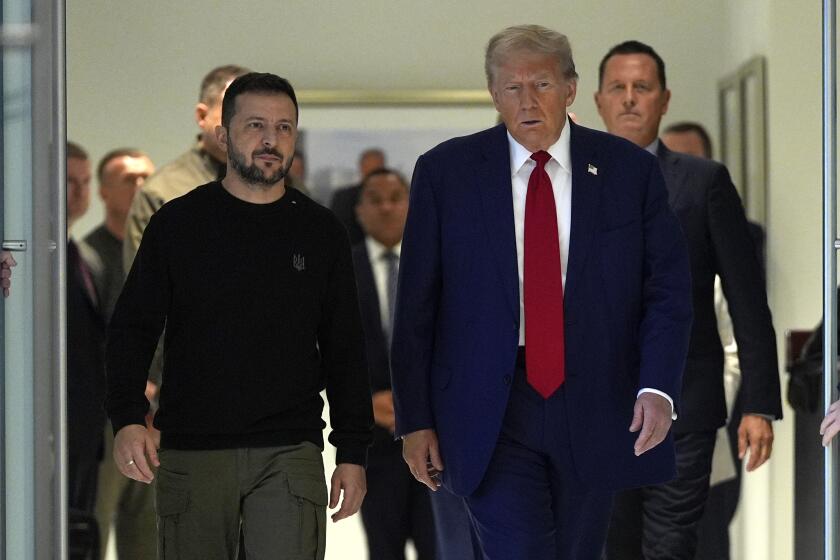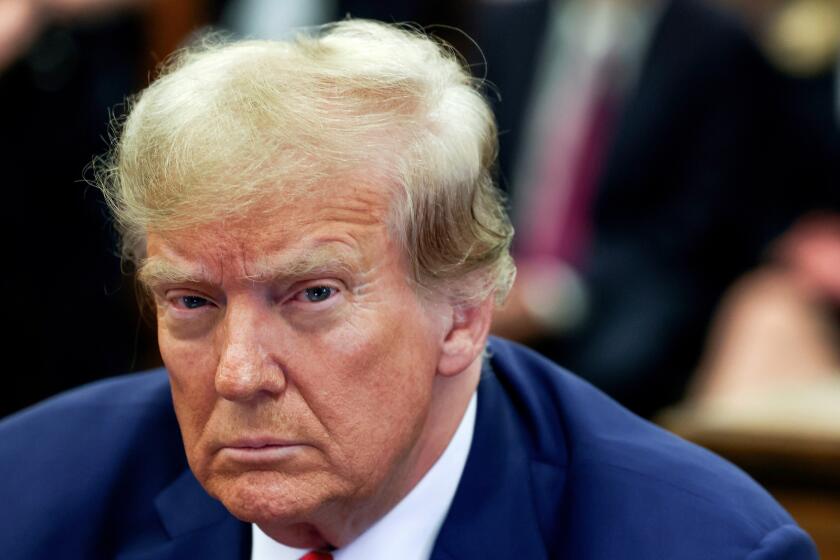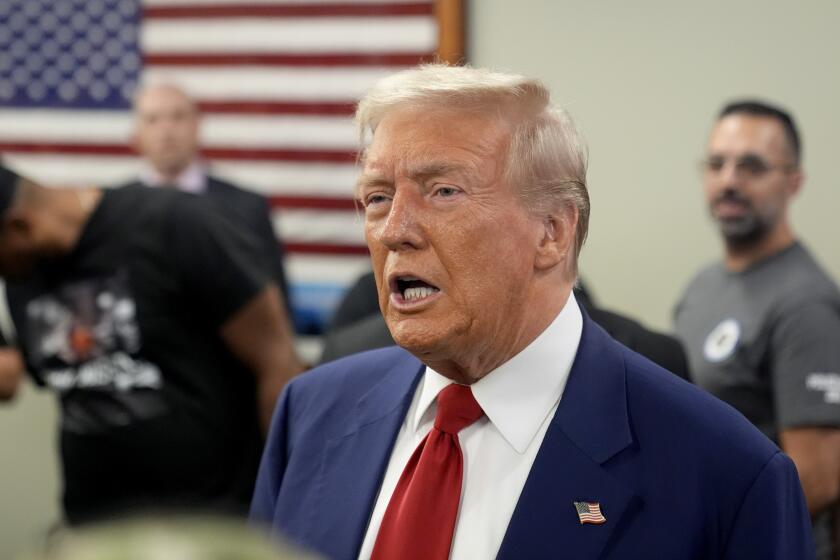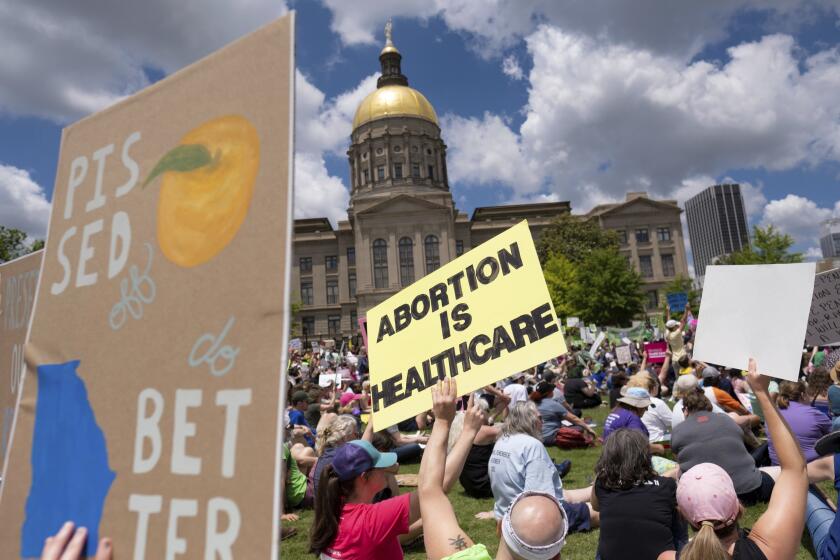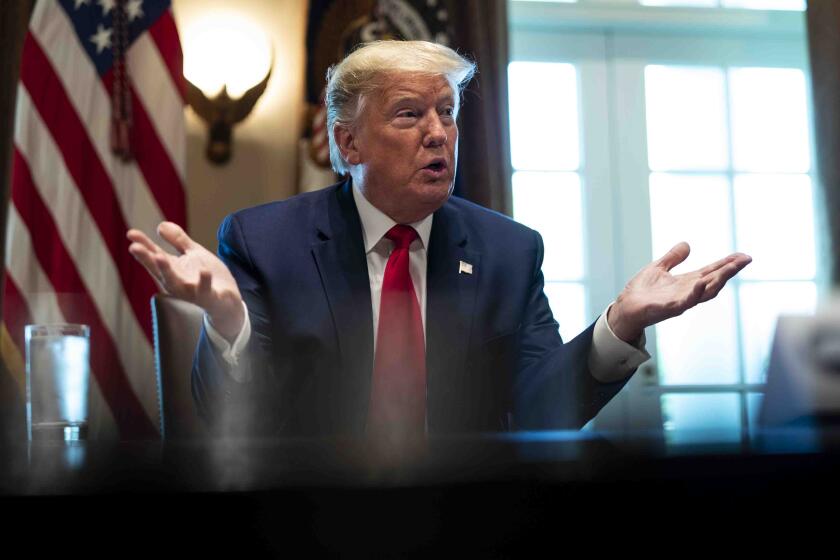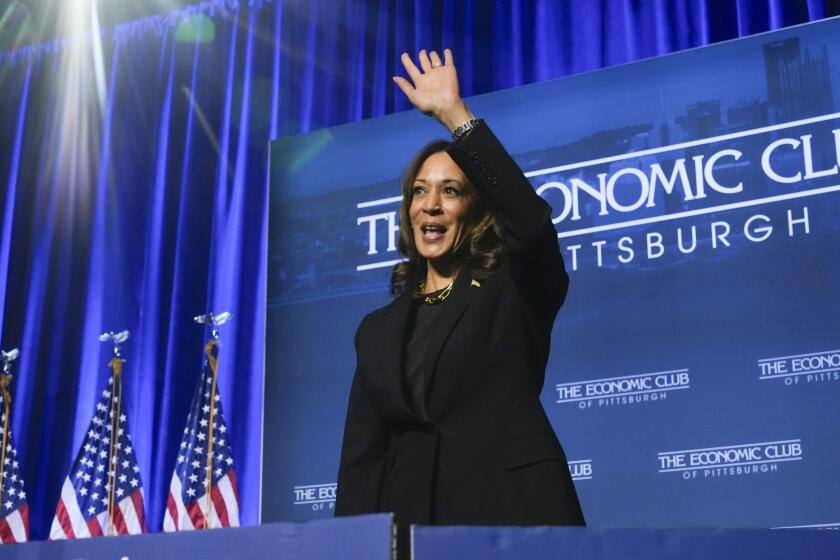Column: Trump flipped on EVs, but he still loathes windmills. That’s a problem for California

- Share via
- Trump changed his tune on EVs: “I’m for electric cars. I have to be, you know, because Elon [Musk] endorsed me very strongly.”
- But he still really, desperately despises wind turbines.
- That’s a major problem for California, which will become more reliant on wind, solar and other renewable forms of energy.
WASHINGTON — For a long time, Donald Trump derided electric vehicles as expensive and impractical. “Nobody wants them,” he charged, even though almost 6 million have sold in the U.S. since 2012.
Then Trump met Tesla mogul Elon Musk, who began pouring millions of dollars into pro-Trump campaign advertising — and now the former president says EVs are “great.”
“I’m for electric cars,” Trump said in August. “I have to be, you know, because Elon endorsed me very strongly.”
That was only one of several flip-flops Trump has executed as he scours the business community for campaign donations.
He once derided bitcoin as “based on thin air,” but after crypto investors donated to his campaign he proposed putting federal assets in a “strategic bitcoin stockpile.” As president, he tried to ban TikTok and flavored vapes; as a candidate, he’s backed down.
But there’s one issue on which Trump has remained an unshakable man of principle: his love for fossil fuels and his disdain for renewable energy, especially wind power.
Harris would continue the internationalist policies of Biden and Obama. Trump would reprise his previous role as disrupter-in-chief.
“I hate wind,” he told oil and gas executives at his Mar-a-Lago resort in Florida as he asked for $1 billion in campaign contributions (“a deal,” he reportedly said).
Trump has long dismissed climate change as “a hoax” and attacked programs to promote renewable energy as “a scam.”
But he’s been especially passionate in his opposition to wind power, especially offshore wind farms.
That’s a problem for California, where Gov. Gavin Newsom has launched a massive effort to make the state carbon neutral by 2045, requiring far more reliance on wind, solar and other renewable forms of energy.
Trump’s aim to abandon clean energy would mean collisions with California over electric vehicles, emission standards and offshore drilling restrictions.
Trump’s animus toward wind energy — surpassing even his loathing for California — dates from a losing battle a decade ago, when Scotland’s regional government built an 11-turbine wind farm in Aberdeen Bay near one of his golf courses. Trump complained that the turbines would ruin golfers’ views and “turn Scotland into a Third World wasteland.”
He’s pursued his anti-wind obsession ever since with hurricane-force gusts of exaggeration, misinformation and bizarre untruths.
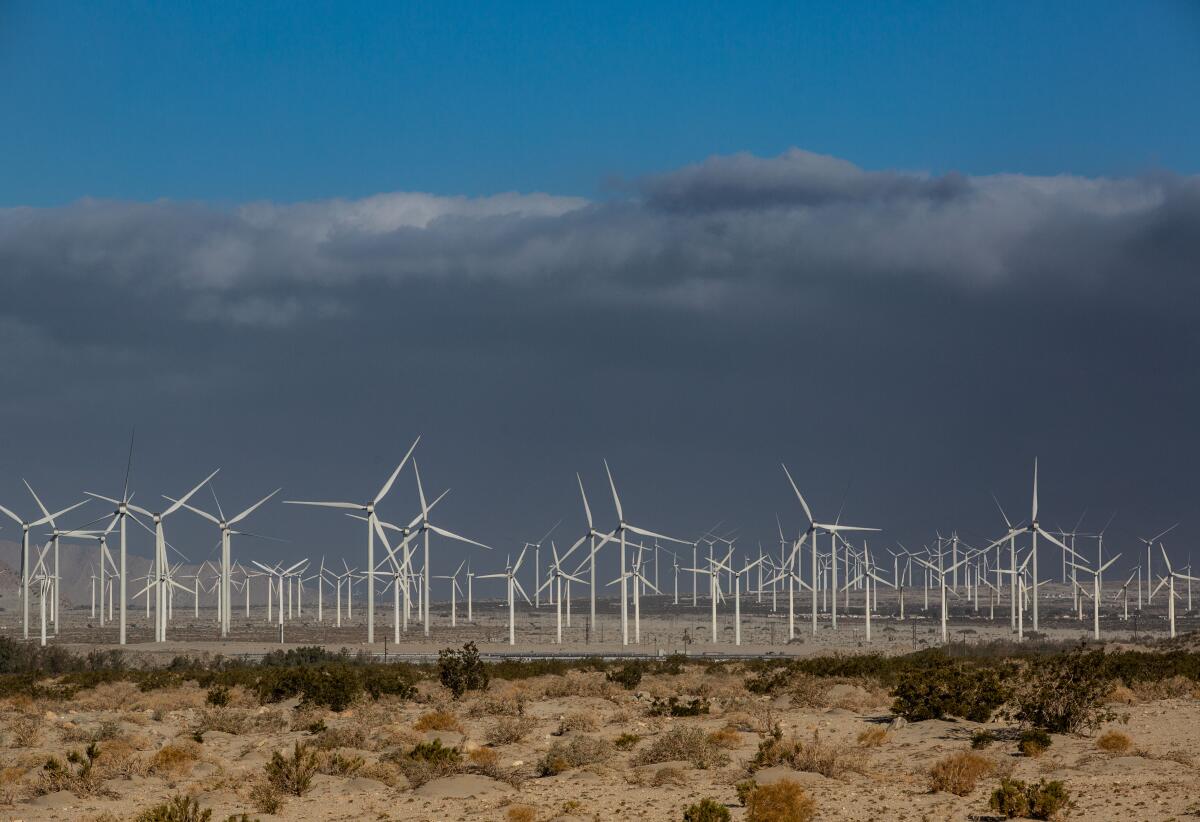
“It’s the most expensive energy there is,” he said last year. (Offshore wind farms are expensive to install, but the energy is cheap once they’re up and running.)
“They say the noise causes cancer,” he said in 2020. (There is no evidence that noise from wind turbines causes cancer.)
Trump wants the right to fire civil servants he sees as disloyal: Cue IRS audits for Trump enemies, anti-vaxxers in the FDA, revenge prosecutions.
“Windmills are causing whales to die in numbers never seen before,” he charged last year. “The windmills are driving them crazy.” (The federal government investigated whale deaths off New England and found no evidence that they were caused by wind turbines. Most were caused by boat collisions or abandoned fishing nets.)
Those may sound like sour grapes from a disgruntled golf course owner, but if Trump becomes president they would be premises of his administration’s energy policy.
At his Mar-a-Lago meeting with the oil barons and a later beachfront rally in New Jersey, Trump promised he would stop federal support for wind power. “It’s going to end on Day One,” he said.
So what does that mean for California?
Campaigns now turn on a small set of national issues – this year primarily the cost of living, abortion and the border.
The state already gets about 6% of its electricity from land-based wind farms, but offshore wind is considered more promising over the long run, mostly because ocean winds are more constant and more powerful. (Trump doesn’t like land-based windmills either — in 2016, he said they make Palm Springs “look like a junkyard” — but there isn’t much he can do about turbines that are already in place.)
In July, the California Energy Commission approved a plan for wind development that centers on deepwater wind farms off Morro Bay and Humboldt Bay, supported by new port facilities in Long Beach and Los Angeles.
The wind farms, about 20 miles offshore, would be massive arrays of floating turbines roughly 70 stories tall. They will be designed to produce 25,000 megawatts of electricity, enough to power 25 million homes — about 13% of the state’s projected electricity consumption in 2045.
Proposition 4 on the November ballot, a $10-billion bond act, includes $475 million for wind-related port infrastructure.
This time he’s claiming the state had lots of blackouts this summer. It did not.
But before any turbines are built, the projects will need a daunting array of permits from the federal government examining not only their environmental impact, but their effects on commercial fishing, navigation and national security.
A new administration can’t cancel leases, which are binding contracts that typically run for decades.
And it can’t easily shut down wind farms that are already up and running. (California’s offshore projects are a long way from that stage.)
But federal agencies can easily slow or delay the long permitting process, which typically takes three to five years, for projects that haven’t been built.
“There are a lot of ways they can slow the process down,” said Jim Lanard, president of Magellan Wind, an offshore development firm. “They can slow-walk the approvals. They can change the rules in midstream. ... A project can suffer death by a thousand cuts.”
It’s still the economy. Whether Kamala Harris or Donald Trump will be president is up to a few million undecided voters in swing states. Guess what they care about.
“Projects that haven’t been permitted will go through excruciatingly long review periods,” he predicted. California’s offshore projects are in that category.
Wind developers will face one more hazard in a Trump administration: The GOP candidate has promised to repeal President Biden’s landmark climate law, which includes big tax incentives to entice investors into financing these long-term projects. Repealing the law would be up to Congress, though — not the president.
Neither of those obstacles would necessarily halt all progress on California’s projects off Morro and Humboldt bays. Developers may need as long as five years to identify the sites where they want to build — a timeline that means they might not seek permits until the next presidential administration.
But the prospect of those policy changes has already injected new uncertainty into the marketplace.
“Several developers have already hit the pause button,” said Lanard, who has worked on California’s North Coast but is not involved in the current projects. “We’re not even going to talk to potential partners [for future projects] for the first two years of a Trump administration, until we know what the environment will be like.”
As many as 10% of voters are still undecided. Many say they dislike Trump but don’t know enough about Harris.
In other words, a Trump administration probably can’t stop work on renewable energy projects entirely, but will almost certainly slow it down.
Unless, that is, a green-energy equivalent of Elon Musk steps forward — a wind-power devotee who wants to contribute millions of dollars to the Trump campaign.
I asked Lanard if he knew of anyone who fit that description. He laughed.
More to Read
Get the L.A. Times Politics newsletter
Deeply reported insights into legislation, politics and policy from Sacramento, Washington and beyond. In your inbox three times per week.
You may occasionally receive promotional content from the Los Angeles Times.
